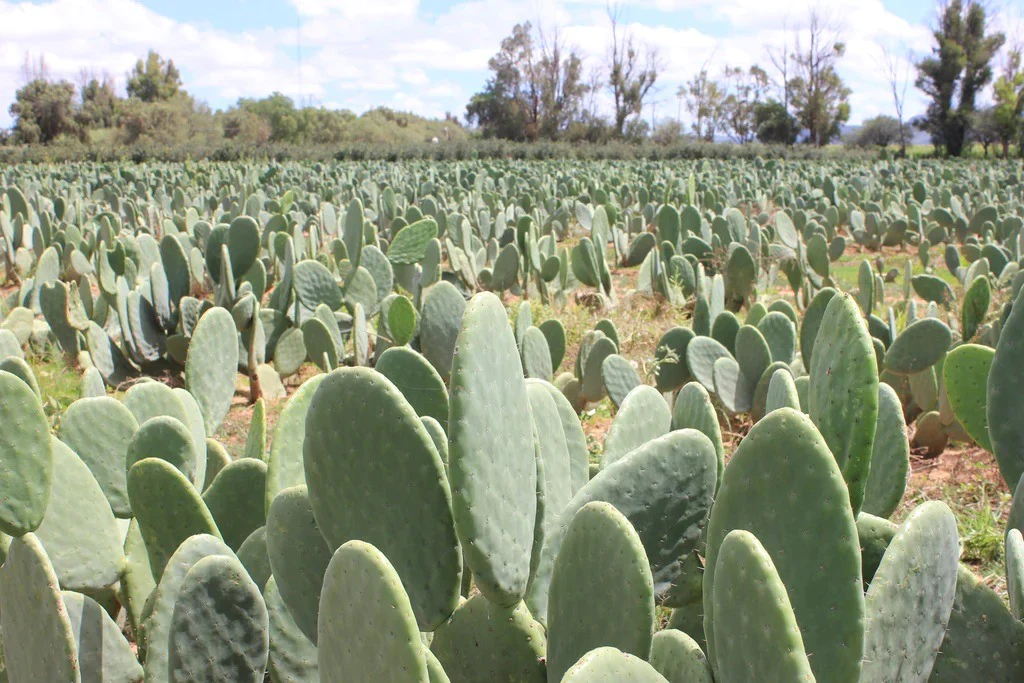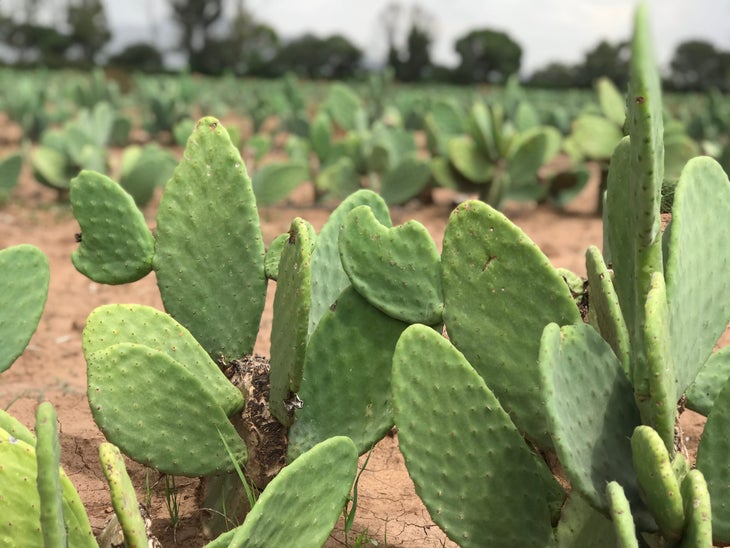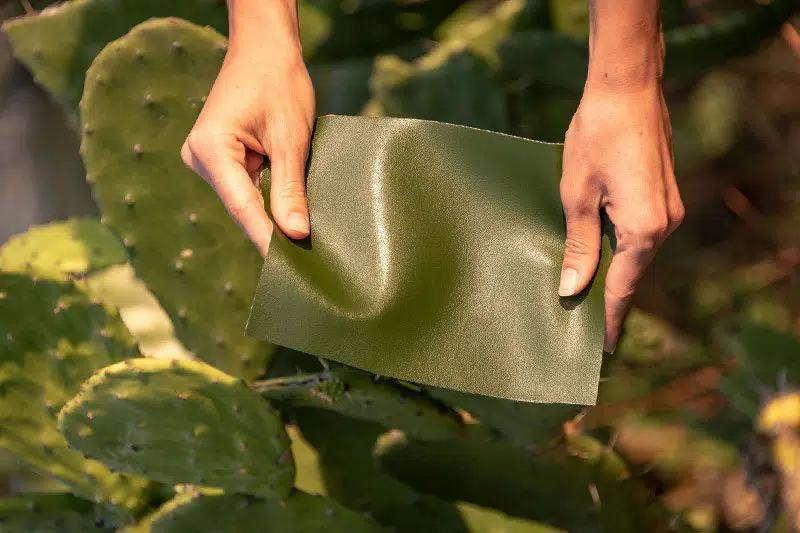How Cactus Leather is Revolutionizing the Fashion Industry
Leather is a highly sought-after material used in the fashion and furniture industries. However, the production of traditional leather has significant environmental and ethical impacts. The demand for environmentally friendly and sustainable alternatives has led to the development of cactus leather. Made from the nopal cactus, cactus leather is a sustainable and ethical alternative to traditional leather.

Leather has been a popular material for centuries, valued for its durability, luxurious feel, and timeless appeal. However, the traditional production of leather is associated with significant environmental and ethical concerns. Fortunately, an innovative alternative has emerged in recent years: cactus leather. In this article, we will explore the process of making cactus leather, its benefits, applications, challenges, and the future prospects it holds.
How is Cactus Leather Made?

Cactus leather is derived from the nopal cactus, a resilient plant that thrives in arid regions. The production process starts with the careful harvesting of mature cactus leaves, which are then cleaned and dried. The dried leaves are processed to extract the fibers, which are combined with non-toxic binding agents and colorants. Through a series of pressing, drying, and finishing techniques, the fibers are transformed into a sturdy and flexible material that closely resembles traditional leather.
Benefits of Cactus Leather
Sustainability and Environmental Advantages
Cactus leather offers several sustainability advantages over traditional leather. Firstly, it requires significantly less water for production, as cacti are naturally adapted to arid environments. This reduction in water usage helps conserve precious resources and alleviates pressure on water supplies. Additionally, cactus leather production emits fewer greenhouse gases and consumes less energy compared to traditional leather tanning processes, contributing to a lower carbon footprint.
Animal-Friendly and Cruelty-Free

One of the primary concerns associated with traditional leather is the ethical treatment of animals. Cactus leather provides a cruelty-free alternative, as it is completely derived from plant-based materials. By choosing cactus leather, consumers can enjoy the look and feel of leather without contributing to animal suffering.
Durability and Quality
Cactus leather is known for its durability and high-quality characteristics. It is resistant to cracking, peeling, and fading, making it suitable for various applications. The material also ages well, developing a unique patina over time, much like traditional leather. This longevity ensures that products made from cactus leather can be enjoyed for years to come.
Versatility and Design Possibilities
Cactus leather offers versatility in design, allowing for a wide range of applications. It can be dyed in various colors, embossed with patterns, and crafted into different textures. From fashion accessories such as bags, wallets, and shoes to upholstery, furniture, and even automotive interiors, cactus leather provides designers and manufacturers with ample possibilities for creative expression.
Applications of Cactus Leather
Fashion Industry and Accessories

The fashion industry has embraced cactus leather as a sustainable alternative to traditional leather. With the growing demand for eco-friendly and ethically produced products, renowned fashion brands have started incorporating cactus leather into their collections. From high-end luxury brands to independent designers, cactus leather is making a mark in the fashion world.
Upholstery and Furniture
Cactus leather’s durability and aesthetic appeal have also led to its application in upholstery and furniture. It can be used to create stunning sofas, chairs, and other furniture pieces, offering both style and sustainability. As consumers become more conscious of their environmental impact, the demand for eco-friendly furniture options is on the rise, and cactus leather fits the bill perfectly.
Automotive and Interior Design
The automotive industry has recognized the potential of cactus leather as an alternative to traditional leather for car interiors. The material’s resistance to wear and tear, combined with its eco-friendly attributes, makes it an attractive choice for manufacturers. Furthermore, interior designers are also incorporating cactus leather into residential and commercial spaces, adding a touch of elegance while promoting sustainability.
Challenges and Limitations
While cactus leather holds tremendous promise, it faces some challenges and limitations that need to be addressed for wider adoption.
Scalability and Production Capacity
As a relatively new material, cactus leather production is still in its early stages. Scaling up production to meet the growing demand while maintaining quality and consistency poses a challenge. Investments in research and development, as well as establishing sustainable supply chains, are crucial to overcoming these hurdles.
Cost Considerations
At present, cactus leather tends to be more expensive than traditional leather due to its limited production capacity and higher manufacturing costs. However, as the production processes improve and economies of scale are achieved, the cost is expected to decrease, making cactus leather more accessible to a broader market.
Consumer Awareness and Acceptance

Despite the environmental and ethical advantages, many consumers are still unfamiliar with cactus leather. Raising awareness about its benefits and dispelling misconceptions will be vital in fostering acceptance and encouraging more people to choose cactus leather over traditional options.
Criticisms of Cactus Leather
Cactus leather has received some criticism from environmental activists. Some argue that the production of cactus leather requires the use of non-renewable resources, such as oil and gas, to power the machinery used in the production process. Additionally, the transportation of cactus leather products can contribute to carbon emissions.
The Future of Cactus Leather
The future of cactus leather looks promising as innovation and research continue to drive its development.
Companies are investing in cutting-edge technologies to optimize the production process, improve material properties, and explore new applications. Collaborations between fashion brands, manufacturers, and research institutions are paving the way for exciting advancements in the cactus leather industry.
The widespread adoption of cactus leather has the potential to revolutionize the fashion and leather industry, leading to a more sustainable and ethical approach to material sourcing and production.
Conclusion
Cactus leather represents a sustainable alternative to traditional leather, addressing the environmental and ethical concerns associated with conventional leather production. Its production process utilizes fewer resources, promotes animal welfare, and offers high-quality materials for various applications. While facing challenges, cactus leather is poised to make a significant impact on the fashion, upholstery, and automotive industries. By choosing cactus leather, consumers contribute to a more sustainable future, where style and ethics go hand in hand.




